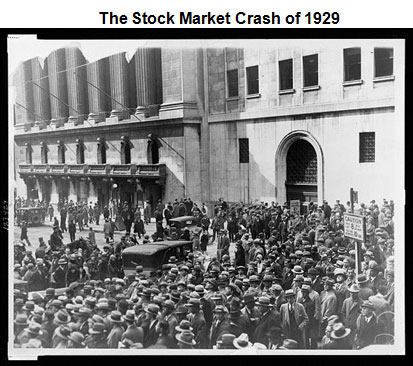
Source: 3c23429r, Library of Congress

Source: 3c23429r, Library of Congress
From 1929 to 1939, the United States experienced one of the most drastic economic crises in the history of the United States. Initiated by the stock market crash of 1929, the decade that followed was marked by high unemployment rates and bank failures. Workers lost jobs along with their homes and possessions. Many of those who were able to keep their jobs barely made enough money to make ends meet. The value of the currency declined steadily, and the agricultural market spiraled downward. Panic spread throughout the country, and lives were turned upside down. By 1933, nearly half of the banks in the country had failed, and almost 15 million people were unemployed.
When the stock market crashed in 1929, many Texans believed the agriculturally based economy would survive in Texas, unlike the economies of other states. Soon, they realized that all industries in Texas would fall victim to the economic crisis that caused national disaster. Since the late 19th century, Texas had primarily been an agricultural state. Oil was discovered during the early 20th century, which strengthened the Texas economy.
Read more about the growing economy of Texas leading up to the Great Depression.
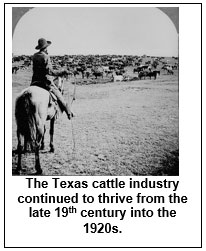 |
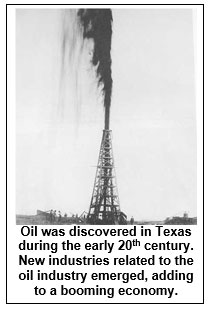 |
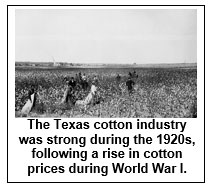 |
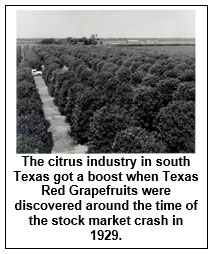 |
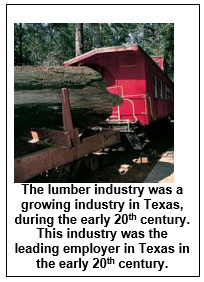 |
In the following sections, you will learn about the economic, social, and political impact of the Great Depression on Texas. You will also learn about how World War II helped to end the Great Depression. Furthermore, you will learn about how Texas and Texans were involved in World War II.
Sources for images used in this section, as they appear, top to bottom: